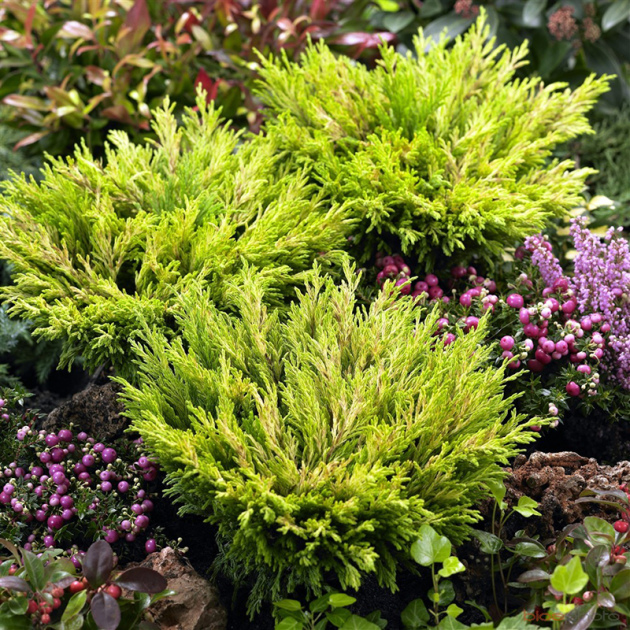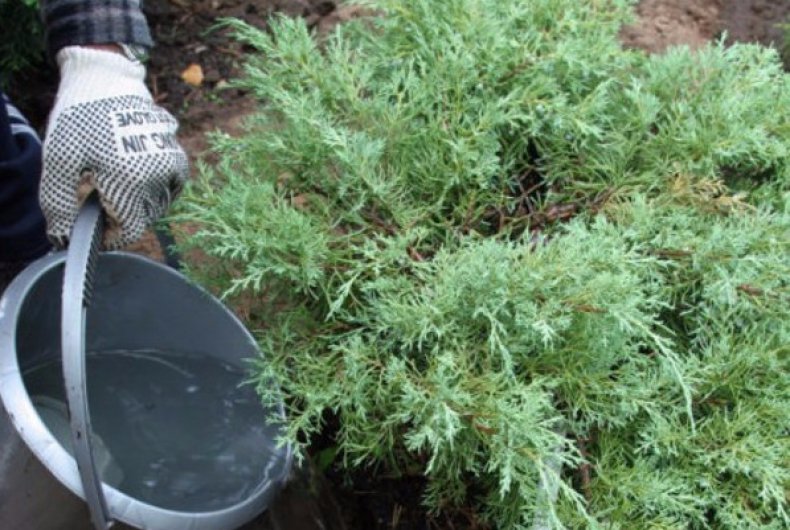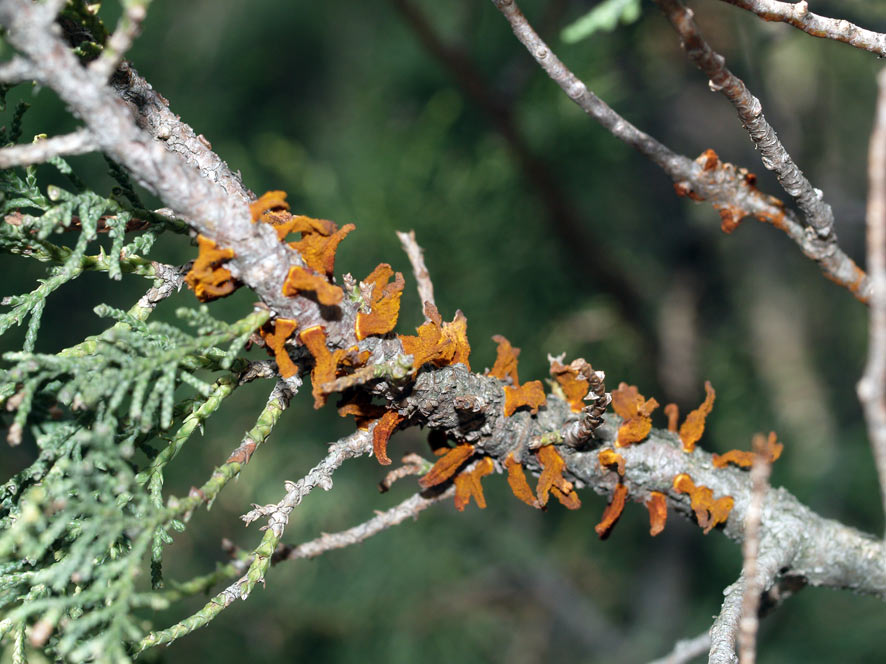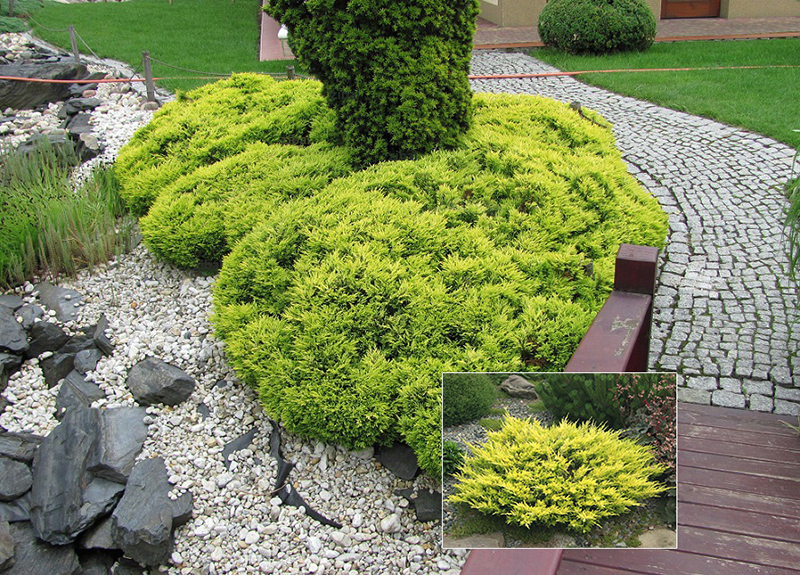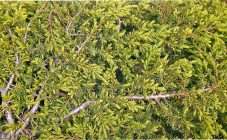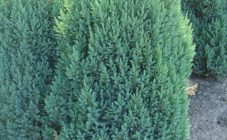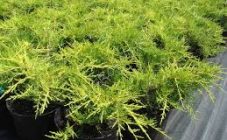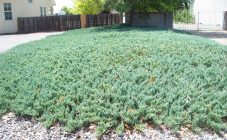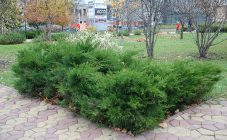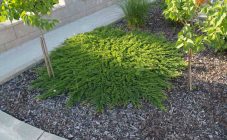Content:
Juniper horizontal Limeglow refers to ornamental evergreens. The special characteristic of the plant, which lies in the color of the needles, plus the dwarf size of an adult plant, attract gardeners to use the shrub when decorating borders and composing compositions with flowering forms. Juniper scent has a beneficial effect on the human respiratory system, purifying the surrounding air. Good frost resistance allows growing the variety in regions with low temperatures in winter.
Description of the variety
Juniper Limeglow was developed by American breeders based on wild types of horizontal junipers. In 1984, a variety was obtained, characterized by low growth, as well as a creeping dense crown. A distinctive feature of the new species is the lemon-yellow color of the needles. It was the lemon shade that gave the name - Lime Glow juniper.
As a decorative form, the shrub can grow up to 40 cm in height with a wide 1.5-2 meter crown. The plant reaches this size only by 10-15 years of age, due to the low growth rate. The low annual growth makes the juniper attractive due to the low need for crown formation.
The branches are parallel to the soil surface, extending from the central trunk. The shoots are covered with needles, which have a scaly shape. The ends of the needles decay over time, forming a kind of pillow from the crown. This shape of the bush is symmetrical and is one of the factors that add to the decorativeness of the juniper. As it matures, the appearance of the plant begins to resemble a funnel, while maintaining a compact structure and decorative appearance.
In young shrubs, the needles have a bright light green color, becoming yellower with age. There is a seasonal change in the color of the needles. In spring it is represented by green color, in summer it changes to lemon yellow. With the onset of autumn frosts, the next color change begins. In winter, the needles of the horizontal Lime Glow juniper acquire an orange-bronze color. This phenomenon allows you to preserve decorativeness in a snowy garden.
Lime Glow is a long-lived plant. Under appropriate climatic conditions, the lifespan can be 500-600 years.
The fruits are globular cones of a bluish-black color, the surface of which is covered with a thick bluish bloom. Fruit ripening occurs only in the second year, after their formation.
Landing
The unpretentiousness of the plant allows you to plant it on almost any soil. However, the creation of conditions close to natural, will have a beneficial effect on the growth and bright color of the crown of the shrub.
The described variety can be propagated in several ways: by seeds or by cuttings. When using seeds as a planting material, a loss of the decorative qualities of the mother plant may occur. Therefore, in order to obtain the required phenotype, it is better to choose cuttings for planting.
For harvesting the cutting, it is better to choose an adult plant of 8-10 years old. It is better to cut cuttings in cool and cloudy weather. In such conditions, the parent plant will recover faster. Each stalk should be 10-12 cm long. From the bottom, it is necessary to remove all the needles and place the future seedling in a root-forming solution.
It is necessary to root the cuttings in a mixture of peat, turf and sand, deepening 3-4 cm into the resulting soil. In this case, it is necessary to set the seedling at an angle of 60º. Seedling care consists in regular watering and maintaining a temperature of 22 ° C.
The first roots appear 50-90 days after planting. With their appearance, you can transplant the bushes into separate pots. Plants can be planted in open ground after 2 years.
Light soil should be chosen for planting. Preference should be given to well-lit areas or with weak partial shade.
Saturated nutrient soils can damage shrubs. A dense soil layer with poor water and air permeability will inhibit the growth of the seedling. Soils with a slightly acidic reaction are preferred for junipers.
For planting, a hole or trench must be dug with a minimum depth of 60 cm. The dimensions of the hole must be chosen based on the purpose of the plant. For a single planting, an ordinary planting pit is suitable, containing the entire root system of a seedling with an earthy clod. When shaping curbs or carpets, it is more rational to prepare trenches. A distance of 50-100 cm should be left between adjacent plants. At the bottom, to protect against the influence of groundwater, a drainage layer should be built, at least 20 cm thick, from chipped bricks.
The soil mixture should be composed of peat, turf and sand in a 2: 1: 1 ratio, respectively. For the correct development of the seedling, the root collar must be left at the same level or slightly above ground level during the installation of the shrub. After that, you need to carefully bury the roots and water the soil abundantly.
Care rules
To preserve the moisture content of the soil layer, you can mulch the soil adjacent to the plant. A peat layer or sawdust is suitable for this. In addition, mulch can reduce the frequency of necessary weeding around the juniper.
Despite its drought tolerance, Lime Glow must be cared for regularly and watered abundantly. This is especially true for young plants during the period of adaptation to new conditions. It activates the growth of young plants by shallow loosening of the soil after watering, creating the necessary aeration of the soil layer. On dry days, the frequency and volume of watering should be increased. Sprinkling has a beneficial effect on the condition of the needles.
You need to feed the juniper once a season. In spring, during the awakening of plants and at the beginning of active growth, any complex fertilizer for conifers can be applied. Or at the end of April-beginning of May, you can add nitroammofosk in the amount of 30-40 grams per plant.
You can trim the crown once a season. A thorough inspection of the plant should be carried out and any injured or dead branches removed. It is permissible to cut only 7 cm from the length of the shoot to form a crown. Over-cutting the plant becomes more susceptible to disease.
In preparation for winter, young plants must be covered. Sprinkling the soil with deciduous litter or peat helps to protect the roots from freezing. Adult plants do not need additional means of protection against the influence of subzero temperatures, due to their high frost resistance.
Diseases and pests
Junipers have a strong immune system.However, there are diseases and pests that affect plants when the immune status of the shrub is weakened by inappropriate conditions of maintenance and care.
Juniper is exposed to rust and fusarium infection. Being highly contagious, plants are isolated from other vegetation when the first signs of disease are observed. Bordeaux liquid and commercial fungicidal preparations are suitable for treatment. For preventive purposes, it is recommended to regularly collect fallen needles and dispose of them.
The most common pests are aphids, spider mites and scale insects. In the initial stage of the lesion, mechanical removal of parasites can be carried out manually. When spreading pests throughout the shrub, specialized means should be used. For prevention, you can periodically treat plants with a soapy water solution.
Application in landscape design
The Lime Glow juniper is a good neighbor for other ornamental crops. The absence of a negative effect on the composition of the soil allows the cultivation of herbaceous, creeping forms, cereals or conifers in the immediate vicinity.
You should pay attention to the preference of the juniper of acidic soils and abundant lighting. In this regard, it is necessary to select plants that suit the same conditions.
Mulch from pebbles or bark goes well when decorating a juniper planting. Lemon color plays well against the predominantly green background of other plants. Lime Glow can often be seen in alpine slides combined with bright colors.
The variety is in perfect harmony with the stony design. At the same time, it looks laconic when decorating paths and borders.
Summing up, we can generalize that the horizontal juniper of the Lime Glow variety is a very unpretentious plant with high decorative qualities. If you follow the simple rules of care and carry out preventive measures, the plant will act as a bright decorative element of landscape design for many years.
